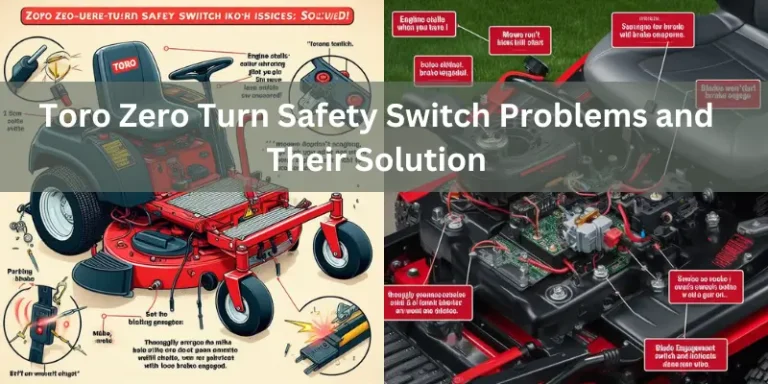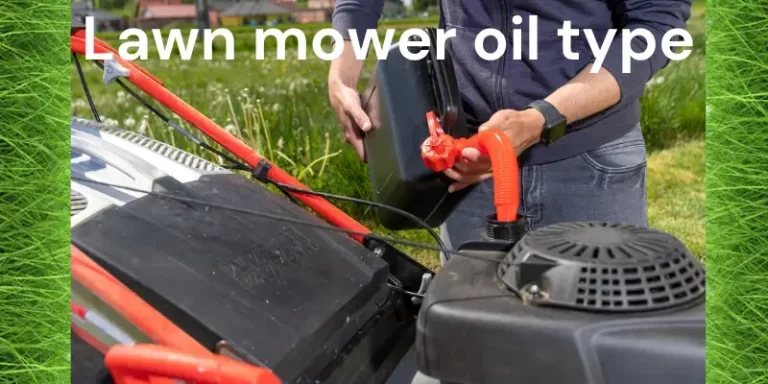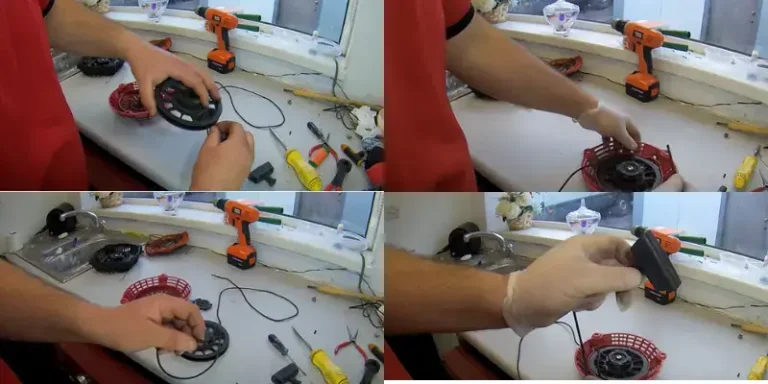How to Replace the Fuel Filter in Lawnmowers
Maintaining your lawnmower is important not only for ensuring optimal performance but also for extending its lifespan. One key component that requires regular attention is the fuel filter. This small part plays a major role in keeping your lawnmower running smoothly by preventing debris from contaminating the carburetor, which could lead to clogs and engine damage.
Understanding the Importance of the Fuel Filter in Lawnmowers
The fuel filter plays a critical role in maintaining the cleanliness of the fuel by filtering out debris and particles. If the filter is not kept clean, these contaminants can obstruct the carburetor, adversely affecting the performance of your lawnmower.
Key Points:
Critical Role: Filters debris and particles from the fuel.
Performance Impact: Keeps the carburetor unobstructed for optimal operation.
Maintenance Recommendation: Annual service to prevent breakdowns.
Cost Efficiency: Helps avoid costly repairs.
How to Locate Fuel Filter in Lawnowers
Locating the fuel filter in your lawnmower is essential for maintenance and troubleshooting purposes. Here’s how to find it:
Consult the Manual:
The first step in locating the fuel filter is to refer to your lawnmower’s manual. It often contains detailed diagrams and descriptions of the mower’s components, including the fuel filter’s location.
Follow the Fuel Line:
Typically, the fuel filter is located along the fuel line between the fuel tank and the engine’s carburetor. Start by tracing the fuel line from the fuel tank to the engine, looking for a cylindrical or rectangular component along the way.
Near the Carburetor:
In many lawnmowers, the fuel filter is positioned close to the carburetor, where it can effectively filter out any debris or contaminants before the fuel reaches the engine.
Check for Accessibility:
The fuel filter may be housed within a protective cover or casing to shield it from damage. Inspect the area around the carburetor and fuel line for any covers that need to be removed to access the filter.
Look for Color:
Fuel filters are often colored, with common options being transparent, black, or yellow. This coloration helps distinguish them from other components in the engine compartment.
Inspect for Labeling:
Some lawnmowers have the fuel filter labeled for easy identification. Look for markings such as “Fuel Filter” or “Fuel Line Filter” to pinpoint its location.
Seek Professional Assistance:
If you’re unable to locate the fuel filter or are unsure about accessing it safely, consider seeking assistance from a qualified technician or contacting the lawnmower manufacturer for guidance.
Types of Fuel Filters in Lawnmowers
Lawnmowers typically use one of three types of fuel filters:
Replacing the Built-In Tank Fuel Filter in Lawnmowers
The built-in tank fuel filter in lawnmowers is an essential component integrated directly into the fuel tank. While it’s designed to function without much maintenance, it may need attention if dirt and debris accumulate. Here’s a detailed guide to help you replace the filter easily:
Step 1: Inspecting the Filter
Begin by running the fuel level down to a low point. With a flashlight, peer into the tank and locate the filter. It’s often a metal screen molded into the plastic near the outlet. Check for any visible debris or clogs that may hinder the filter’s performance.
Step 2: Removing the Tank
If you spot debris in the filter, it’s time to take action. First, turn off the lawnmower and disconnect the spark plug wire to ensure safety. Next, carefully detach the fuel tank from the lawnmower. Refer to your lawnmower’s manual for specific instructions on how to remove the tank safely.
Step 3: Cleaning the Tank and Filter
Once the tank is removed, empty any remaining fuel and dispose of it properly. Use a suitable cleaner, such as brake or carburetor cleaner, to flush out the tank thoroughly. Pay close attention to the area around the filter to ensure all debris is removed.
Step 4: Replacing the Filter
After cleaning the tank, inspect the filter again. If it’s damaged or severely clogged, it’s best to replace it with a new one. Install the new filter securely in place, ensuring it fits snugly against the outlet.
Step 5: Reattaching the Tank
Carefully reattach the fuel tank to the lawnmower, following the manufacturer’s instructions. Make sure all connections are tight and secure to prevent leaks.
Step 6: Testing
Before using the lawnmower again, perform a quick test to ensure everything is working correctly. Reconnect the spark plug wire, add fresh fuel to the tank, and start the engine. Monitor the performance to verify that the new filter is functioning as intended.
Replacing the Inline Fuel Filter in Lawnmowers
The inline fuel filter, located between the fuel tank and the carburetor, is a crucial component that helps keep your lawnmower running smoothly. Here’s a step-by-step guide to replacing it easily:
Step 1: Prepare
Before starting, ensure your lawnmower’s fuel shutoff valve is turned off. If your mower doesn’t have one or you forget to shut it off, you can use a fuel line clamp to stop the flow of fuel.
Step 2: Remove the Old Filter
Disconnect the clamps holding the fuel lines in place and carefully remove the fuel lines from both sides of the old filter. Take your time to avoid damaging the lines.
Step 3: Install the New Filter
Pay close attention to the flow direction indicated by an arrow on the new filter. This arrow indicates the correct direction for fuel flow. Connect the new filter to the fuel lines, making sure it’s oriented correctly.
Step 4: Secure Everything
Once the new filter is in place, reattach the clamps to secure the fuel lines. Double-check to ensure everything is tight and properly connected to prevent any leaks.
Step 5: Restart Fuel Flow
If you used a fuel line clamp, remove it to allow fuel to flow again. If you shut off the fuel valve, remember to turn it back on. This step ensures proper fuel flow to the carburetor.
By following these straightforward steps, you can easily replace the inline fuel filter in your lawnmower, helping to maintain its performance and long life.
Replacing the Internal Fuel Line Filter in Lawnmowers
The internal fuel line filter plays a crucial role in ensuring clean fuel flow to your lawnmower’s engine. Although it requires a bit more effort to replace, it’s a task you can tackle with ease by following these steps:
Step 1: Drain the Fuel
Start by ensuring the fuel tank is nearly empty. Then, disconnect the fuel line from the fuel valve to allow any remaining fuel to drain out. This step prevents fuel spillage and makes the replacement process safer.
Step 2: Remove the Old Filter
Next, disconnect the fuel line from the tank and carefully extract the old filter. Take care not to damage the fuel line or any surrounding components during this process.
Step 3: Install the New Filter
Insert the new filter into the fuel tank nipple, ensuring it fits securely. Then, reconnect the fuel line to the tank, making sure it’s properly attached. Double-check all connections to prevent leaks.
Step 4: Refill the Tank
With the new filter in place and all connections secure, refill the fuel tank with fresh gasoline. This ensures your lawnmower is ready to go when you need it.
By following these steps, you can effectively replace the internal fuel line filter in your lawnmower, promoting optimal engine performance and prolonging the lifespan of your equipment. Regular maintenance of the fuel system helps keep your lawnmower running smoothly, ensuring hassle-free lawn care season after season.
Conclusion
Replacing the fuel filter in lawnmowers is a simple yet effective way to ensure your equipment remains in top working condition. The above steps are equally useful for every lawnmower oil filter. You can prevent common fuel system issues and keep your mower running efficiently for years to come.

About Naveed A Hashmi
In my childhood, I used to see my parents while working in the land, for these reasons today I have been serving the same as our own tradition and culture. I thus love to stay in it, because I want to learn something advanced and new so that I may improve my farm’s contour and help others with my experience.







